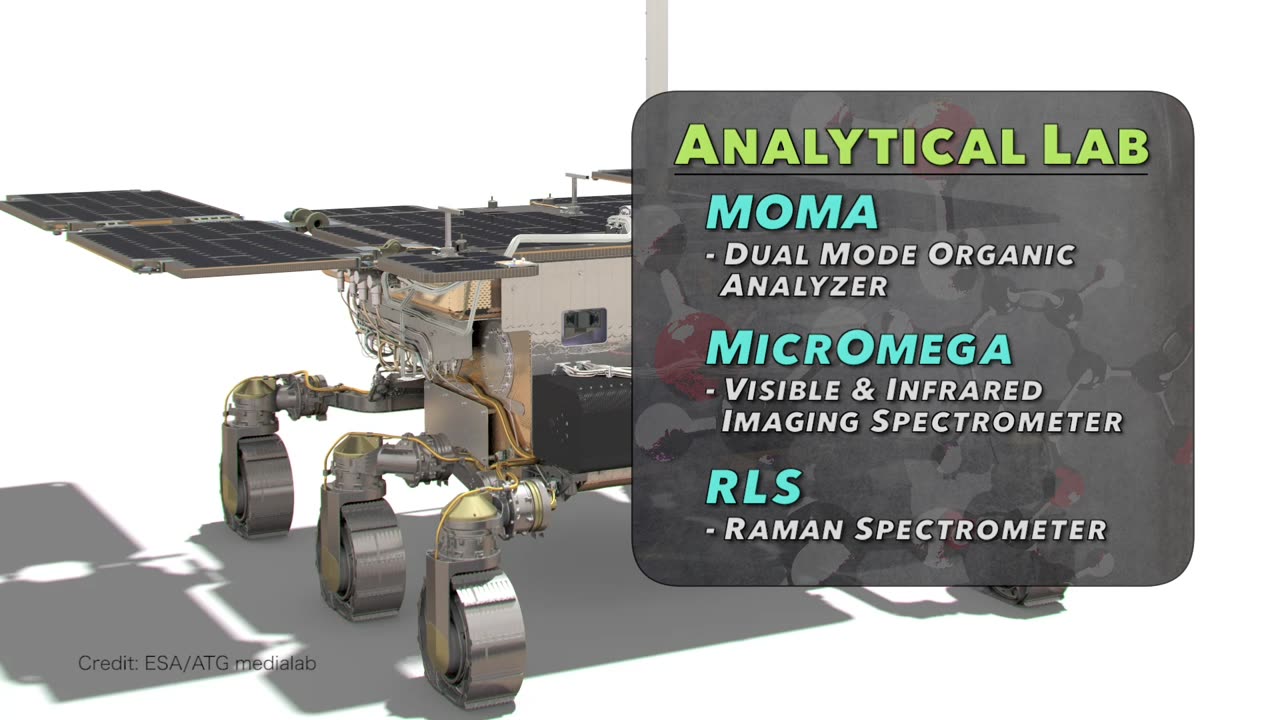Premium Only Content

Searching for Signs of Life on Mars
One of the biggest questions in planetary science is whether life ever arose on Mars, and NASA and the European Space Agency are sending a cutting-edge instrument to the red planet to find out. The Mars Organic Molecule Analyzer, or MOMA, is a sophisticated suite of technologies that squeezes a lab full of chemistry equipment into a package the size of a toaster. MOMA will travel to Mars aboard ESA's Rosalind Franklin rover (formerly ExoMars), where it will search for evidence of past or present life.
MOMA will not only search for organic molecules, which make up all life on Earth, it will also analyze their structure using its linear ion trap – the first use of this technology on Mars. Doing so will help scientists to determine whether the molecules could be of biological origin, a significant leap forward in the search for life beyond Earth.
MOMA's mass spectrometer subsystem and main electronics were built at NASA's Goddard Space Flight Center in Greenbelt, Maryland. The pulsed UV laser and high-temperature ovens were developed in Germany, and the gas chromatograph in France. The Rosalind Franklin rover is a component of ExoMars, the primary Mars exploration program of the European Space Agency.
Credits:
Animator
Krystofer Kim (KBRwyle)
Science writer
William Steigerwald (NASA/GSFC)
Writer
Dan Gallagher (KBRwyle)
Editor
Dan Gallagher (KBRwyle)
Scientists
William Brinckerhoff (NASA/GSFC) [Lead]
Ricardo Arevalo (NASA/GSFC)
Veronica Pinnick (NASA/GSFC)
Engineer
Patrick Kimvilakani (NASA/GSFC)
Producer
Dan Gallagher (KBRwyle)
Narrator
Joy Ng (KBRwyle)
Videographers
Rob Andreoli (AIMM) [Lead]
John Caldwell (AIMM)
Support
Matthew Radcliff (KBRwyle)
Technical support
Aaron E. Lepsch (ADNET)
-
 1:15:00
1:15:00
Awaken With JP
5 hours agoMerry Christmas NOT Happy Holidays! Special - LIES Ep 71
75.8K77 -
 1:42:21
1:42:21
The Quartering
7 hours agoTrump To INVADE Mexico, Take Back Panama Canal Too! NYC Human Torch & Matt Gaetz Report Drops!
61.6K42 -
 2:23:15
2:23:15
Nerdrotic
6 hours ago $8.26 earnedA Very Merry Christmas | FNT Square Up - Nerdrotic Nooner 453
42.9K4 -
 1:14:05
1:14:05
Tucker Carlson
6 hours ago“I’ll Win With or Without You,” Teamsters Union President Reveals Kamala Harris’s Famous Last Words
122K268 -
 1:58:31
1:58:31
The Dilley Show
6 hours ago $27.24 earnedTrump Conquering Western Hemisphere? w/Author Brenden Dilley 12/23/2024
109K27 -
 1:09:59
1:09:59
Geeks + Gamers
7 hours agoSonic 3 DESTROYS Mufasa And Disney, Naughty Dog Actress SLAMS Gamers Over Intergalactic
70.5K16 -
 51:59
51:59
The Dan Bongino Show
8 hours agoDemocrat Donor Admits The Scary Truth (Ep. 2393) - 12/23/2024
739K2.23K -
 2:32:15
2:32:15
Matt Kohrs
19 hours agoRumble CEO Chris Pavlovski Talks $775M Tether Partnership || The MK Show
112K30 -
 28:23
28:23
Dave Portnoy
19 hours agoDavey Day Trader Presented by Kraken - December 23, 2024
147K40 -
 59:29
59:29
BonginoReport
10 hours agoTrump, Murder Plots, and the Christmas Miracle: Evita + Jack Posobiec (Ep.110) - 12/23/2024
154K127